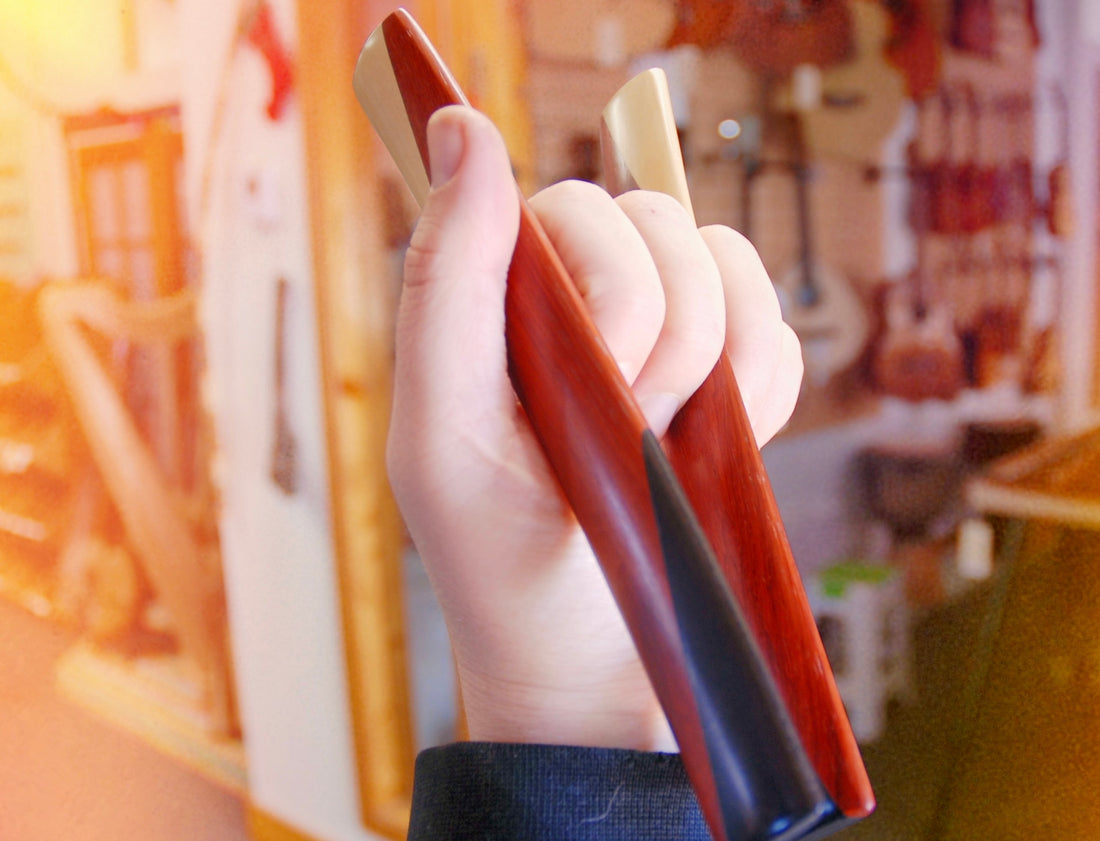Bones are one of the earliest rhythm instruments in human history. The tradition of playing rhythm bones probably arrived in the United States with Irish and other European immigrants. The instrument has roots also in Asia, India, ancient Mesopotamia, Egypt, Greece, as well as Rome. American Minstrel music in the mid-1800s featured the banjo, fiddle, tambourine, and bones (more on this here). This helped to further popularize rhythm bones, which are still played in many forms of folk music today.
While bones are often sourced from animals (ribs or lower leg bones especially), they can be made from a variety of materials, and are perhaps most commonly crafted out of wood. Each material offers a different tonality to the player, and some people like to mix and match materials. Softwood tends to be quieter than hardwood, although some players prefer the tonal versatility of animal bone. That being said, the tone is greatly affected by the placement of the instrument in the hand, so a lot of it comes down to practice in playing both quietly and loudly, and changing up the grip and hand position. As with any instrument, it takes time and dedication to learn to play the bones and to accompany melody players.
Typically somewhere between 4 and 8 inches in length, rhythm bones are curved so as to fit in the hand, usually with convex surfaces towards each other. There are various methods of playing the bones (maybe as many ways as there are players), but in most cases one bone is fixed in place against the palm while the other "hinge" bone is free to move back and forth using wrist motions. Bones can be played in a minimalist fashion (close to the chest), or more energetically (with bigger arm and body motions).
Some musicians will play with a pair of bones in each hand, but many play with just one pair of bones. The American style typically involves playing a set of bones with both hands (allowing for syncopated beats and greater tonal variety), whereas Irish bones playing tends to be one-handed and comparatively understated (as traditional Irish music emphasizes melody over rhythmic accompaniment).
While it may seem a daunting instrument to play (especially in a folk music tradition where playing socially is a big part of the appeal), there are many great videos to help get you started. Once you begin to get the feel for the instrument, you can play along with recordings from the comfort of your own home. Although the bones have their roots in folk music, you can play along with any kind of musical recordings you like, and practicing along with different styles will help you to broaden your scope and incorporate new techniques. The bones are an extension of the body, and each player will naturally develop their own unique style of playing, so have fun with it!
Some instructional videos to get you started:
Other performances for inspiration:
- Brother Bones, "Sweet Georgia Brown"
- Carolina Chocolate Drops, "Snowden's Jig"
Getting started on the bones:
How to Play the Bones with Percy Danforth
Perhaps the most comprehensive instructional DVD for learning to play various musical styles, as well as a discussion of the history of the rhythm bones.
Peruse our selection of bones in our online store, or come to visit us and try some out in Berkeley, CA next time you're in town!

